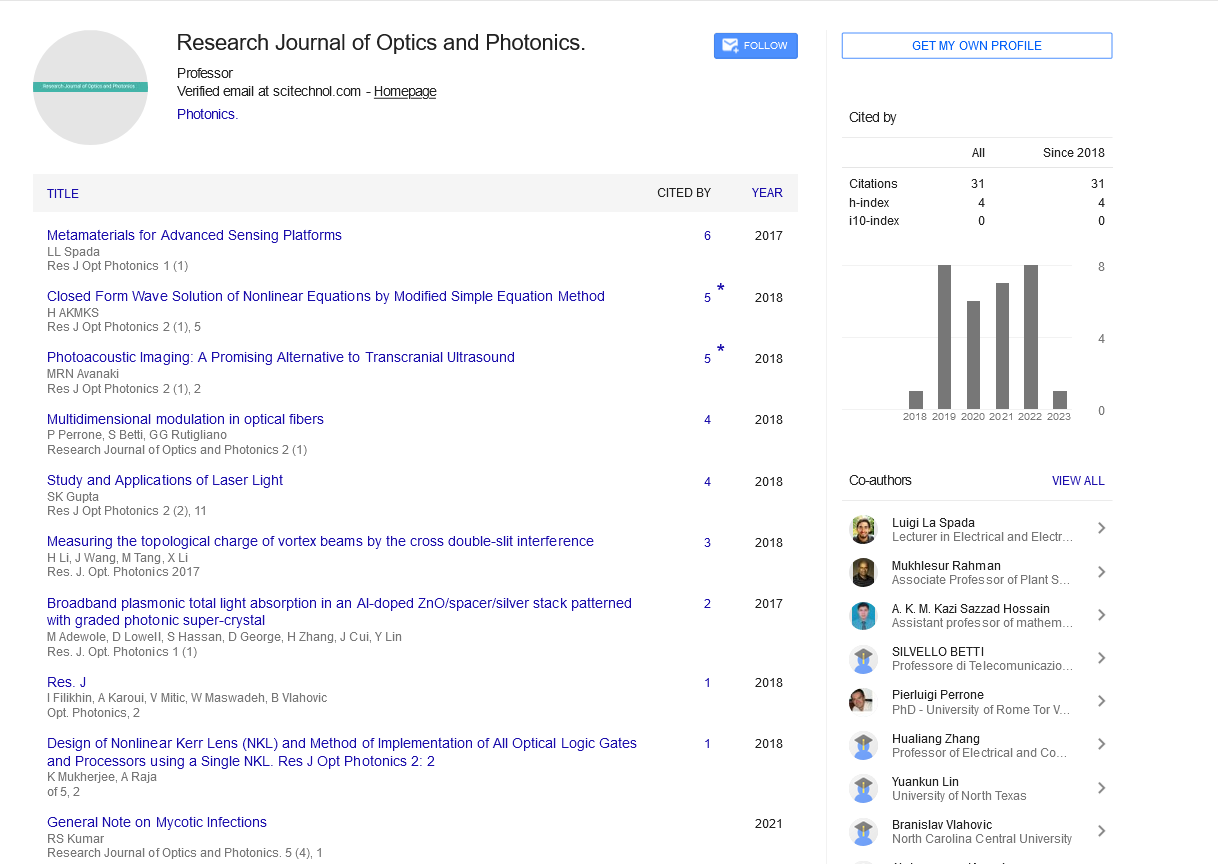Laser induced breakdown spectroscopy for analysis of materials
W Aslam Farooq
King Saud University, Saudi Arabia
: Res J Opt Photonics
Abstract
There are many methods for material analysis, for example, Atomic absorption spectroscopy, Energy dispersive X-ray spectroscopy, Inductively coupled plasma mass spectrometry, Inductively coupled plasma atomic emission spectroscopy etc but Laser-induced breakdown spectroscopy (LIBS) has become a very popular analytical method in the last two decades due to its unique features such as applicability to any type of sample, practically no sample preparation, remote sensing capability, and speed of analysis. The technique has a remarkably wide applicability in many fields, and the number of applications is still growing. In this technique, an intense beam of a pulsed laser is focused on a very small volume of a target (see fig), which brought the target material to a transient plasma state where the sample’s components are essentially reduced to individual atoms. In such high-temperature plasma, atoms are brought to excited states and ionized. These states, after decay, emit radiation. By analyzing the recorded spectrum of the emitted radiation, one can determine the elemental composition of the target. In order to detect the spectral signature of each element, very high-resolution spectral analysis is required. The identified atomic/ionic lines are used for qualitative identification and quantification of the elements present in the plasma. Their relative intensities can be used for the quantitative analysis of the elements present in the target material. In order to perform precise elemental analysis, the characteristics of the LIBS plasma, such as the temperature, the number densities, and the electron density of different elements present in the plasma are optimized In the present talk fundamentals of LIBS technique, its application and optimization of all above mentioned characterization will be discussed in detail.
Biography
Wazirzada Aslam Farooq did his Ph.D in laser spectroscopy from Imperial College London in 1992. He is co-founder of Pakistan Institute of Laser and Optics (PILO) Islamabad. He served there as head of institute till 2009 then joined King Saud University Riyadh Saudi Arabia as professor of Physics. He has published more than 140 papers in ISI journals in various disciplines of science and engineering including, laser material interaction, Laser Induced Breakdown Spectroscopy (LIBS), nanotechnology, Dye synthesis and quantum dots solar cells. Dr Farooq has supervised many post graduate students in the above mentioned fields. He is collaborating with many internationally reputed institutes in USA, Japan, China, Pakistan and Turkey.
E-mail: wafarooq@hotmail.com
 Spanish
Spanish  Chinese
Chinese  Russian
Russian  German
German  French
French  Japanese
Japanese  Portuguese
Portuguese  Hindi
Hindi 